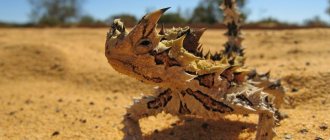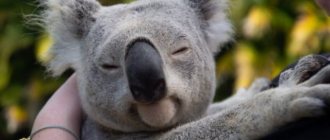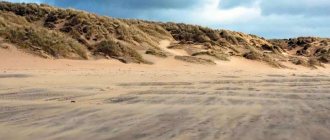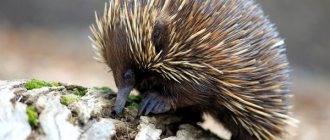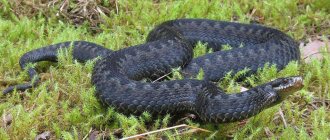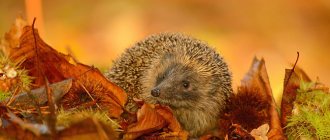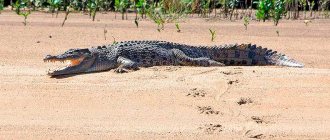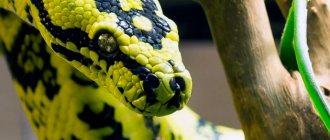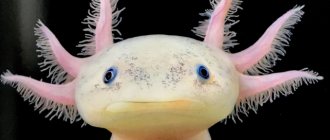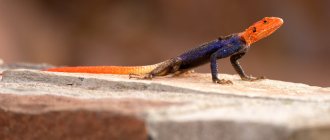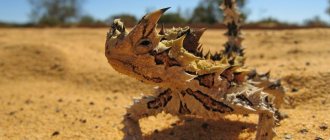Sea urchin
The sea urchin is one of the most unusual deep-sea inhabitants. This animal may not be afraid of enemies, since its body is completely covered with huge, sharp, poisonous thorns. So in sea waters there are few people who want to eat sea urchins. The only enemies of these creatures are otters and people.
crown of thorns
The crown of thorns or acanthaster is nothing more than the famous starfish. This is a very beautiful sea creature, the color of which varies from bright orange to bluish-green. Acantaster, as a rule, grows to 40-50 centimeters. An adult sea star has up to 21 rays.
The body of the crown of thorns is completely covered with sharp needles, the length of which is 2-3 centimeters. They have poisonous glands at their base. That is why even a small injection from such needles can be fatal for both animals and humans.
Who has needles
Needles are used as a means of protection:
Lizards. In some lizards, the skin has changed and turned into spikes or sharp plates. The belt-tailed fish lives in Africa, its body is covered with sharp, spiny plates. When danger arises, the belt-tail grabs its own tail with its teeth, turning into a spiny wheel. The Moloch lizard from Australia is brightly colored, its horny scutes have modified and turned into spines covering the entire body. Despite her terrifying appearance, she is harmless.
Spiny orb-weaving spider. A small (about 1 cm for females and 2-3 mm for males) spider with 6 spines is absolutely harmless to humans and never crawls into a home on its own. The spider got its name thanks to the 6 spines located on its back.
Grasshopper Spiny devil . The small Ecuadorian grasshopper (7 cm), thanks to its bright color and numerous sharp needles, is perfectly protected from enemies. Moreover, he himself is capable of scaring even a small monkey: the grasshopper takes a threatening pose and opens its mini-jaws.
And caterpillars can also be called the most “needle-shaped” on earth. Most of them have numerous spines. Moreover, for some they are quite poisonous and can cause serious intoxication. Determining in advance whether this is so is sometimes quite simple: the more beautiful the caterpillar, the more poisonous its sharp bristles can be.
Armadillo
The Armadillo is a creature most commonly referred to as an armadillo. The natural habitat of this animal is the Argentine sandy plains, with extremely sparse vegetation: cacti and thorny bushes. It is not easy to survive in such an area. However, nature provided the armadillo with everything necessary for a comfortable existence. The armadillo's back and head are covered with a thick shell consisting of durable, hard plates. Thanks to this, the animal is well protected from sharp stones and earthen debris. The armadillo spends his days digging tunnels. He needs a shell in order to feel calm underground.
Nutrition
Thorny dragons are myrmecophagous - animals that feed exclusively on ants. Their diet mainly consists of ants of the genera Iridomyrmex (especially Iridiomyrmex rufoniger) and Crematogaster. Also, sometimes the menu is supplemented with ants from the genera Ectatomma, Monomorium, Camponotus, Pheidole and Polyrhachis. Moloch sits in ambush and waits for the ants to pass nearby. For feeding, they choose areas near herbaceous and shrubby plants. Active nutrition begins at temperatures above 24 degrees Celsius. In some areas, moloch feeds in the morning (before 11 a.m.) or in the afternoon (from 3 to 6 p.m.). Since ants have relatively low nutritional value due to their high chitin content, lizards need to eat a lot of ants. The thorny dragon's large belly is well adapted to eating large quantities of food, and it is estimated that they eat about 750 ants per day. The average feeding rate of a moloch is 2.9 ants per minute, but instances of consuming 1 ant per second have been recorded. Research shows that lizards absorb about 59% of the metabolizable energy of their prey. Their fecal pellets are oval, black and shiny, and crumble easily due to their ant-like exoskeletons.
Moloch uses its complex skin structure to direct water to its mouth by capillary force. The base of the spine is surrounded by deep channels that effectively collect water, and then the water, as if through capillaries, even against gravity, is directed to the corners of the animal's mouth. These lizards live in extremely dry areas and the condensation of water on the surface of the body is a consequence of adaptation to difficult environmental conditions.
Spiny Spider
The spiny spider is an inhabitant of tropical forests. It can be found exclusively in warm countries such as Mexico, Peru, Cuba, and Jamaica. The color of these unusual creatures depends directly on their habitat.
The spiny spider can be bright red, lemon yellow, or even green. The spikes also have variegated colors. Therefore, the appearance of the animal seems to warn enemies of danger. But in fact, the spiny spider is not capable of harming anyone. It poses a threat only to small insects that are part of its diet.
Lesser belttail
The small belt-tailed lizard is a predatory lizard that lives in Africa. This animal cannot boast of large size. Its body length is only 15-21 centimeters. The main advantage of the small belt-tail is the hard plates on its back and sharp spines that cover its paws, neck and head. In case of even the slightest threat from the outside, the lizard immediately curls up into a ring and grabs its tail with its jaws. An armored covering of shell and spikes also protects the animal’s body from various damage, but the belt-tail most often lives in rocky gorges.
Behavior
The thorny dragon can remain active over a wide range of body temperatures. The average body temperature of this lizard is 28.3 degrees Celsius. The greatest activity occurs in the fall (from March to May) and the end of winter (from August to December). They become almost completely inactive during the heat of summer (January-February) and the coldest months (June-July).
The Moloch lizard is not a territorial animal and does not have assigned territories. The habitat ranges of individual individuals overlap widely. The average distance that thorny dragons travel in one day is 77.9 m, but some individuals move more than 500 m. On average, males move more than females.
Hedgehog
The hedgehog is one of the most famous forest animals. Contrary to popular belief, it is a predatory animal. The hedgehog happily hunts small rodents and insects. Often he even destroys bird nests.
The hedgehog has many enemies in the forest. However, the needles perfectly protect it from attacks from predators. In case of danger, the animal tucks its paws and curls up into a prickly ball. When he is in this position, neither the wolf nor the fox can reach him.
Role in the ecosystem
The main role of molochs in the ecosystem is to control the ant population of the regions where they live. They coexist with other insectivorous lizards, however, the thorny dragon's diet is more generalized than that of other species.
Molochs, as a rule, are largely parasitized by nematodes. These worms may use ants or termites as intermediate hosts to reach their final hosts, lizards.
Porcupine
The porcupine has the longest quills. No other mammal can boast such large spines. The length of porcupine quills is 40 centimeters. The animal uses them exclusively for protection. If the porcupine is in danger, it begins to growl and shake its quills violently. If the predator does not respond to such warning signals, the porcupine attacks it, trying to inflict serious damage on it with its quills.
Moloch
The Moloch is an Australian lizard often called the “spiny devil.” The body of this strange creature is completely covered with curved spines. In the event of a predator attack, the moloch tilts its head as low as possible to divert its attention. The fact is that in the cervical region of the animal there is a small spiny growth. When the lizard leans forward, it forms some semblance of a “false head,” and this greatly distracts the enemy’s attention. In addition, spikes directed towards the enemy can scare them away. While the enemy is deciding whether he should attack such a formidable opponent or not, the hammer manages to quickly run away and hide.
Echidna
The echidna can only be found in Australia. The needles are located only on the sides and back of this amazing animal. But the echidna’s abdomen and legs are covered with brown, coarse hair. The needles protect this creature from attacks by predators. After all, the echidna lives in open areas, where it is very difficult to find shelter and reliably hide from enemies.
This was a list of the most spiny animals on Earth. Among them there are many quite harmless creatures. And these creatures need needles, thorns and thorns, first of all, in order to protect themselves from predators. Without this, they would be too vulnerable, and therefore completely unsuited to survival.
Mammals
In different countries there are mammals whose hair has changed in the process of evolution and turned into long needles. They serve as protection against natural enemies. Some animals have spiny hair:
Jerzy. They are well known and live in different countries. A total of 7 genera and 23 species are known. The smallest individuals grow up to only 10 cm, the largest - up to 45. The spiny hairs are short (maximum 5 cm), but there are quite a lot of them - up to 10,000. Hedgehogs are nocturnal and hibernate in winter. They live alone: a whole family can only be met while the cubs are with their mothers.
Contrary to popular belief, hedgehogs are active predators, and they have good immunity to poisons; they can eat poisonous snakes and insects. And berries, fruits and mushrooms are far from the main “dishes” in the diet, since some types of hedgehogs do not even eat them, but can feed on carrion. Animals usually do not dig their own holes, preferring to occupy ready-made ones, since the structure of hedgehog paws is clearly not adapted for digging. At the slightest danger, hedgehogs curl up into a ball, protecting their soft abdomen, head and neck, on which only soft fur grows, from predators.
Interesting fact: many types of hedgehogs are excellent swimmers and even climb trees. They are also quite aggressive, and can sometimes fearlessly attack an attacker and bite.
Tenrec. Some species of Madagascar tenrecs are very similar to hedgehogs. The large and small tenrecs are completely covered with spines; in other species, the piercing cover may be partial (sometimes only on the back of the head). These animals are active predators and feed on insects.
Animals are able to change their body temperature, so their activity depends on the environment (to survive the cold, they hibernate).
Echidnas. These amazing marsupials with a long nose and spines live in Australia, New Guinea, and Tasmania.
Echidnas are unique, but they have so much in common with a variety of animals that it can be difficult to understand who they really are:
- mammals: yes, but marsupials, without papillae, milk is simply squirted into the pouch where the newborn is located;
- oviparous: yes, baby echidnas hatch from eggs and move into their mother’s pouch;
- anteaters: a thin long nose is an ideal device for eating ants, and they are the main food of echidnas, but at the same time they do not belong to the anteater family;
- they hibernate like bears: yes, and at low temperatures their body also “cools down” to 40, this is at normal +320 (which is not very typical for warm-blooded animals), and they breathe only once every 3 minutes.
Echidnas are also long-lived (they live up to 50 years), they are good swimmers, and even large bodies of water are no obstacle for them. They do not dig holes, although when danger arises they burrow into the ground, leaving only their spiny defense visible.
Here is such an unusual animal - an echidna, covered with numerous spines (even on its legs there are them) 5-6 cm long. It is predominantly nocturnal, feeds on ants and insects, which it catches with a long sticky tongue (25 cm), capable of “flying out” from the mouth by 18 cm.
Porcupine. This is an animal with large black and white needles up to half a meter long. Found in Europe, America, Africa, Asia, India, Transcaucasia, it leads a terrestrial lifestyle. The American species of porcupine (arboreal) is an excellent tree climber, and almost all swim well. Porcupines are rodents; especially large individuals grow up to 0.9 m and gain up to 27 kg.
The long needles lie on the back at rest, but when in danger they rise vertically with the help of the dorsal muscles. At this time, the animal turns its back to the aggressor, stomps, snorts, hisses and rattles its long needles like a rattlesnake - its tail scales.
Interesting fact: the porcupine is not only frightening, it sharply and with lightning speed jumps onto the offender with its backside and returns to its original position. There are quite a few spines left in the predator’s muzzle: they are hollow and easily break off.
Several myths are associated with the prickly defense of these animals:
- The spines are filled with poison: this is indeed the case in other animals, but in mammals there are no poison glands. The legend arose due to the fact that needles often cause inflammation - the terrestrial lifestyle of these animals makes the spines a source of infections. As a result, the injection sites become inflamed and painful.
- You can pin something on them. This is not true; modified hair is very fragile and breaks easily. Pictures of hedgehogs carrying an apple or a mushroom on their back are fiction.
- They “shoot”: this is not so, it’s just that those who want to feast on a hedgehog, echidna or porcupine will end up with fragments of quills in their paw or on their face, which will subsequently cause many unpleasant moments.
In addition to hedgehogs and similar mammals, other “thorny” animals and insects also live on land.
